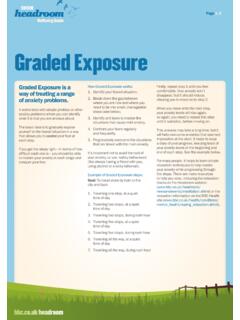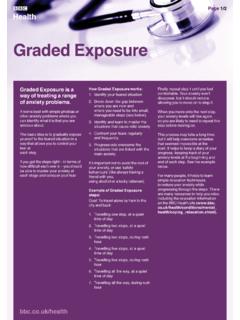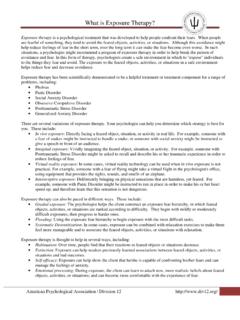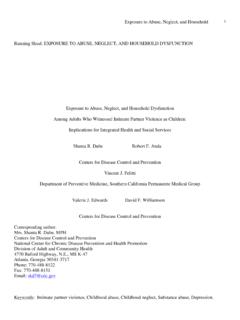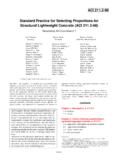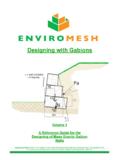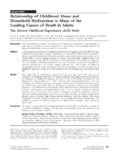Transcription of Graded Exposure - TalkPlus
1 Graded Exposure Graded Exposure Graded Exposure is an evidence based intervention for the treatment of anxiety and phobias. This workbook can be used either alone or with the support of your Psychological Wellbeing Practitioner. How to use this workbook. Graded Exposure has three steps. It is important to work through one step at a time, only move on to the next step of Graded Exposure once you are comfortable with using the previous step. It is key to follow all three steps of Graded Exposure in sequence. It can take some time for an intervention to become effective and to show improvement. It is important to allow enough time for the intervention to be effective.
2 Helpful Resources; Exposure and Habituation Facing Your Fears An Introduction to Coping with Anxiety, by Brosan and Hogan Coping with Anxiety, Brosan et al Graded Exposure Tackling Avoidance in Feared Situations Graded Exposure is an evidence based treatment used to tackle avoidance of feared situations, activities or objects due to anxiety. It works through a process called habituation, a gradual reduction in the physical sensations of anxiety. This is achieved through identifying feared situations or objects and gradually exposing ourselves to them whilst following four conditions.
3 When we fear certain situations, objects or activities, we either avoid or leave the situation in order to reduce our anxiety. Although this may be helpful in reducing our distress in the short term, avoidance can help to maintain this pattern of fear and anxiety. Therefore each time we go into a feared situation we experience the same high level of anxiety time after time. Habituation As shown in the above left graph, when we leave a situation our anxiety immediately reduces, however the next time we enter that situation our anxiety becomes just as high. As in the past we have found relief in leaving, this is what we often continue to do to reduce the distress we experience.
4 The anxiety we experience is part of the fight or flight response, a biological system to prepare us to respond to frightening or dangerous situations. However physiologically we cannot remain at this high level of anxiety, so by exposing ourselves to the situation, and remaining in it, our anxiety naturally reduces, this is the process of habituation. Graded Exposure works by gradually exposing ourselves to the feared situation, beginning only with situations that we feel we are able to tolerate, this can be seen in the graph on the right. This allows the process of habituation to occur in order to reduce our fear and reduce our anxiety response in the long term.
5 STEP ONE Identifying anxiety-provoking situations The first step of Graded Exposure is to identify all the activities that cause you anxiety and are therefore either avoiding, leaving or distracting yourself. It may be that you have a number of different feared situations, objects or activities, it is then important to separate these fears into different lists and select one specific fear to tackle at a time. Avoiding or leaving a situation are just two things we might do to make ourselves feel safer and to reduce our anxiety. There are often more subtle ways in which we avoid fully experiencing anxiety in situations.
6 These include distraction and safety behaviours, see the box below for examples, to help identify the subtle behaviours we use to minimise distress. Engaging in distraction and safety behaviours also maintain our fear of the situation in the long term, much as avoiding or leaving it does. Therefore it is important to include these in our list, for example going shopping with a friend instead of alone so we feel safer and experience less anxiety. Be specific Whilst making the list of anxiety provoking situations, include when we distract ourselves, it is important to be specific.
7 Include in the list what, where, when and with whom each situation occurs. It may be that there are a number of similar situations that cause anxiety, for example going shopping with a friend at 8am or going shopping with a friend at 4pm, due to the fact that these small differences cause different levels of anxiety. Listening to music Taking a friend Carrying a bottle of water Talking on the phone Routine and checklists Sitting next to your partner Alcohol Being near the exit Planning your route beforehand Medication To complete Step 1 use Worksheet 1. Fill in the worksheet with activities that provoke anxiety.
8 Common distraction techniques and safety behaviours. WORKSHEET ONE Identifying anxiety-provoking situations Anxiety-Provoking Situations STEP TWO Developing a hierarchy Having identified a specific fear to work on, the second step of Graded Exposure is to rank the situations identified in Worksheet 1 in order of the level of anxiety you experience. Ranking activities from least anxiety-provoking, to most anxiety-provoking means that Graded Exposure can be carried out gradually, without experiencing levels of anxiety that are overwhelming. Activities are ranked from those that would provoke the highest level of anxiety to those that provoke less intense feelings.
9 It is useful to think about the situation that would be easiest to remain in first and the situation that would be the most difficult, and then fill in situations in between. This process can seem very daunting or overwhelming at first therefore this stage of developing a hierarchy is very important. Sometimes it can be difficult to think of what would be more or less anxiety-provoking, therefore it is useful to; Rate predicted anxiety levels It can be helpful to mark on Worksheet 1 next to each situation how much anxiety it would provoke from 0-100%. This will then make it easier to place the situations or activities in a hierarchy, from the lowest to the highest percentage.
10 Break it down Sometimes it is difficult to come up with several different variations of the same situation, especially as the feelings it causes are so overwhelming. By thinking of what, where, when and with whom each situation occurs we can then break down the situations into many variations that cause different levels of anxiety. The box below gives some examples of this, also see example sheets at the back. Different times of the day With safety behaviours and without Looking at a photograph Watching a video Larger or smaller locations Alone or with a friend To complete Step 2 use Worksheet 2.

![ZÀ]}µ o À }v - TalkPlus](/cache/preview/1/7/c/4/4/b/6/6/thumb-17c44b66edfab6bc2dc10c7f4bbf6249.jpg)





